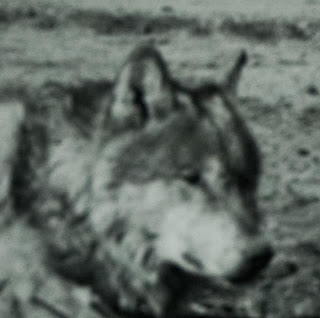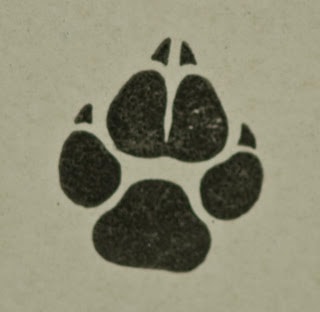Lobo lived his wild romantic life from 1889 to 1894 in the Currumpaw (Corrumpa) region, as the ranchmen know too well, and died, precisely as related, on January 31, 1894. The fact that these stories are true is the reason why all are tragic. The life of a wild animal always has a tragic end.” – Ernest Thompson Seton
So Seton begins his introduction to “Lobo, the King of Currumpaw,” in his 1898 book, Wild Animals I Have Known. First published in the November 1894 issue of Scribner’s Magazine, Lobo led Seton to huge literary and commercial success when the book came out. As we approach the 114th anniversary of its publication, the book has sold in the hundreds of thousands of copies through many editions to our own day. While all the stories in the book became popular, the lead story about the wolves became the best known. In the story, a clever hunter (Seton) pursues the brave and noble Lobo to his death. I will present an in-depth consideration of the story in Part II; here, in Part I, is a synopsis of this great American story.
The Setting
It starts here: northeastern New Mexico, October 1893 – February 1894 in the area now known as Union County. (It separated from Colfax County in January 1894.) This semi-arid region of broad tablelands is cut by deep arroyos. Rising from the flanks of two volcanoes, Sierra Grande and Capulin (a National Monument), the Corrumpa Creek (an intermittent stream) strikes eastward across dozens of miles toward the town of Clayton. It was in this area that Seton hunted the wolves. Although written with some embellishment, Seton’s account of his encounter with Lobo is close to the actual events as he recorded them in his journal at the time.
Lobo, Part 1: A large gray wolf, leader of a small pack, preyed upon cattle introduced into the Currumpaw Valley by ranchers (in the mid to late 19th century). The “Mexicans” called him “Old Lobo” or the “King.” Lobo gained a reputation as the largest, smartest, and loudest of his kindred. The pack consisted of an additional five wolves including a white-coated female, Blanca.
These animals were occasionally spotted – from a distance – by cowboys and shepherds. The wolf pack took a terrible toll on herds and flocks. The problem was made worse by the wolves’ habit of eating only animals they freshly killed. All attempts to hunt or poison the wolves met with failure. A thousand dollar reward offered for Lobo’s hide brought in bounty hunters. But the hunters wore out their horses and mourned the loss of large wolf-hounds killed by the larger wolves. The killing of sheep and cattle by wolves continued unabated. From the rancher standpoint, all seemed hopeless.
Part 2: The narrator of the story (Seton), formerly a wolf hunter (in Canada) had for some time made his living at a “stool and desk” (as a commercial artist specializing in wildlife illustration) when an acquaintance, a ranch owner on the Currumpaw, invited him to New Mexico. Seton agreed to hunt the wolf pack.
He hunted, however, not with a gun, since the wolves were out only at night, but by scattering poisoned meat and later, poisoned meat baiting metal leg traps. Although he made every effort to hide any hint of human scent from the traps, Lobo seemed to taunt him, gathering up baits and scattering “filth” over them. Lobo kicked rocks onto hidden traps, springing them. When Seton hid traps in devious patterns Lobo backed out them unharmed. Nothing worked.
Part 3: After weeks of unrewarded effort, during which Seton kept up his acute observation of wolf habits, he at last noticed something important. While the wolf pack generally stayed behind Lobo, he discovered that Blanca sometimes ran heedlessly ahead. Seton changed tactics. Rather than continue his fruitless efforts to trap Lobo, he instead turned his efforts toward Blanca.
Seton set traps with his usual cunning, concealing them in the usual way so that Lobo would find and disable them as was his habit. He set out six steel leg traps near a freshly killed cow. He removed the head and tossed it casually aside. There he planted a devious booby-trap. He buried two traps under the dirt by the head, knowing that wolves would not eat it, and knowing that Lobo would not approach, but betting that one of the others might investigate while Lobo busied himself disabling the other traps.
Seton returned the following morning to see if this trick worked. The head was gone along with one of the traps, dragged away by a strong but trapped wolf. He followed the trail catching up within a mile to find Blanca still in the trap and hopelessly dragging the heavy steer head behind her. Despite her terrible situation, Blanca turned to fight with the last of her strength, howling for Lobo, who howled in return, but could do nothing against men with guns. Seton killed her in a manner he came to regret.
He returned to the ranch with her body. All night the cañons reverberated with the plaintive cries of the bereft Lobo. “It was sadder than I could possibly have believed.” Lobo prowled about the ranch in the dark.
Seton came up with another trick to use against Lobo. On horseback, he dragged her body through a field to set out a chaotic pattern that Lobo would attempt to follow if he returned. Counting on Lobo’s love and loyalty for his mate, he set out even more traps. Surely the heartbroken wolf would come looking for Blanca in a reckless state of mind.
Lobo in the Traps
And so it came to pass.
Two days later Seton found Lobo caught in three of four traps. Like Blanca, he made ready to fight upon his antagonist’s approach, even biting through and severing a lasso thrown over his neck. Seton aimed at the animal with his rifle but at the last possible instant, held back, somehow unable to carry through.
Seton and a cowboy threw a stick and heavy cord to the wolf who bit into the stick and became entangled in the cord; they drew the cord tight to close his massive jaw. Unable to bite, Lobo ceased all resistance. They threw the wolf over a saddled horse and returned with him to the ranch. Now a prisoner, Lobo silently watched his passing kingdom.
At the ranch, they secured Lobo with a collar and strong chain, removing the stick and cord from his mouth. Seton offered the wolf water and meat, which Lobo ignored. The hunter examined the wolf closely, looking into Lobo’s eyes and reaching out and touching him. But the wolf did no more than stare out onto the prairie where he and Blanca had roamed free.
During the night Lobo died, the spirit gone out of him. He could not tolerate the loss of strength, the loss of his freedom, and the loss of his beloved mate. Seton placed his body next to the remains of Blanca, reuniting them.
Here ends the life story of Lobo, the King of Currumpaw, but, as we shall see in Part II, the legacy of this wolf proved all the greater with his death. Although he never admitted it, Seton spent the remainder of his long life atoning for what he had done. It will not be giving too much away to write that he never killed another wolf.


